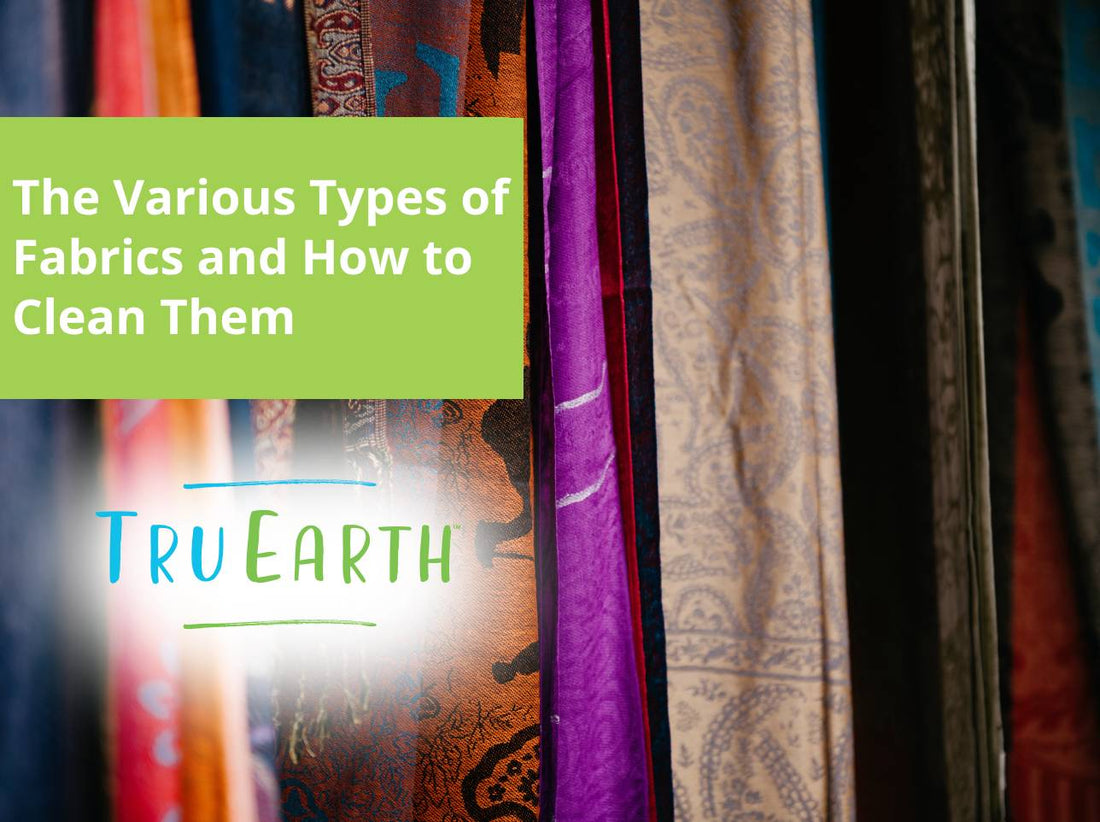Stoffen spelen een belangrijke rol in ons dagelijks leven, van onze kleding tot de bekleding van onze meubels. Elk type stof vereist specifieke verzorging en reinigingsmethoden om de kwaliteit en levensduur te behouden. In dit artikel bespreken we de verschillende soorten stoffen die we vaak in huis hebben en geven we waardevolle inzichten in hoe je ze effectief kunt reinigen.
Of u nu te maken hebt met delicate zijde, stevig katoen of synthetische mengsels: als u de juiste reinigingstechnieken kent, blijven uw stoffen fris en stralend.

Natuurlijke vezels
Natuurlijke vezels, zoals katoen, linnen en zijde, zijn afkomstig van plantaardige of dierlijke bronnen. Elke natuurlijke vezel heeft unieke eigenschappen die een specifieke reinigingsmethode vereisen om hun integriteit te behouden.
Katoen
Katoen is een veelzijdige en veelgebruikte stof die bekendstaat om zijn duurzaamheid en ademend vermogen. Om katoenen stoffen te reinigen, is wassen in de wasmachine of met de hand met een mild wasmiddel doorgaans geschikt. Het volgen van de wasvoorschriften op het wasetiket en het scheiden van kleuren is essentieel om afgeven van kleurstoffen te voorkomen. Vermijd het gebruik van heet water of agressieve chemicaliën die krimp of kleurvervaging kunnen veroorzaken. Daarnaast wordt aan de lucht drogen of in de droger drogen op een lage temperatuur aanbevolen om de kwaliteit van de stof te behouden.
Linnen
Linnen is een lichte en ademende stof gemaakt van vlasvezels. Het heeft een frisse en natuurlijke uitstraling, waardoor het ideaal is voor zomerkleding en huishoudtextiel. Linnen kledingstukken kunnen het beste gewassen worden in koud of lauw water met een mild wasmiddel. De meeste linnen stoffen kunnen met de hand of in de wasmachine gewassen worden op een fijnwasprogramma . Het is cruciaal om overmatig drogen te voorkomen om overmatig kreuken te voorkomen. Strijken terwijl het linnen licht vochtig is, kan een gladde afwerking geven.
Zijde
Zijde is een luxueuze en delicate stof die bekendstaat om zijn zachtheid en glans. Het reinigen van zijde vereist extra zorg om de schoonheid ervan te behouden. Handwas in koud water met een mild wasmiddel dat speciaal voor zijde is ontwikkeld, wordt aanbevolen. Beweeg de stof voorzichtig en vermijd wringen of draaien. Spoel grondig uit en druk overtollig water eruit met een schone handdoek. Aan de lucht laten drogen of plat neerleggen heeft de voorkeur om uitrekken te voorkomen. Strijk op een lage temperatuur of gebruik een stoomapparaat om kreukels te verwijderen.
Synthetische vezels
Synthetische vezels zijn synthetische materialen die de eigenschappen van natuurlijke vezels nabootsen en tegelijkertijd een verbeterde duurzaamheid en prestaties bieden. Het reinigen van synthetische stoffen vereist specifieke richtlijnen om hun uiterlijk en functionaliteit te behouden.
Polyester
Polyester is een populaire synthetische stof die bekendstaat om zijn sterkte, kreukbestendigheid en sneldrogende eigenschappen. Polyester kledingstukken kunnen over het algemeen in de machine worden gewassen in warm water met een mild wasmiddel. Vermijd bleekmiddel of wasverzachter, omdat deze de stof kunnen beschadigen.

Polyester kan in de droger op een lage temperatuur of aan de lucht worden gedroogd. Strijken op een lage temperatuur of een stoomapparaat kan helpen om kreukels te verwijderen, maar controleer altijd het waslabel van het kledingstuk voor specifieke instructies.
Nylon
Nylon is een duurzame, lichte synthetische stof die veel wordt gebruikt in sportkleding, badkleding en kousen. Het wordt aanbevolen om nylon kledingstukken in de wasmachine te wassen in koud of warm water met een mild wasmiddel. Gebruik een fijnwasprogramma om overmatige beweging te voorkomen. Vermijd bleekmiddel of wasverzachter, omdat deze de stof kunnen verzwakken.
Aan de lucht drogen of op een lage temperatuur in de droger drogen heeft de voorkeur. Nylon stoffen zijn over het algemeen kreukvrij, maar gebruik indien nodig een strijkijzer of stoomapparaat op lage temperatuur.
Gespecialiseerde stoffen
Bepaalde stoffen vereisen speciale reinigingsmethoden vanwege hun unieke eigenschappen of afwerkingen. Hier zijn een paar voorbeelden:
Wol
Wol is een natuurlijke vezel die bekend staat om zijn warmte en isolerende eigenschappen. Vanwege de delicate aard van wollen kledingstukken kunt u ze het beste chemisch laten reinigen of met de hand wassen met een mild wolwasmiddel. Vermijd heet water en overmatige beweging om krimpen of vervilten te voorkomen.
Knijp het overtollige water er voorzichtig uit en breng het kledingstuk weer in vorm terwijl het nog vochtig is. Aan de lucht laten drogen of plat neerleggen is essentieel om uitrekken te voorkomen. Het strijken van wollen kledingstukken is over het algemeen niet nodig, maar gebruik indien nodig een lage temperatuur en een strijkdoek.
Leer
Leer is een duurzaam en luxueus materiaal dat gebruikt wordt in diverse producten, waaronder jassen, tassen en meubelstoffering. Het reinigen van leer vereist gespecialiseerde producten en technieken om de uitstraling en levensduur te behouden.
Het wordt aanbevolen om het oppervlak regelmatig af te nemen met een zachte doek om stof en vuil te verwijderen. Gebruik een leerreiniger of milde zeep gemengd met water voor vlekken of gemorste vloeistoffen. Wrijf de aangetaste plek voorzichtig in en veeg hem schoon met een schone, vochtige doek. Regelmatig een conditioner aanbrengen op het leer kan het zacht houden en scheuren voorkomen.

Ga veilig aan de slag met het wassen van stoffen!
Kortom, inzicht in de verschillende soorten stoffen en hoe je ze moet reinigen is essentieel om hun kwaliteit en uiterlijk te behouden. Of je nu werkt met natuurlijke vezels zoals katoen, linnen en zijde of synthetische stoffen zoals polyester en nylon, het volgen van de juiste reinigingstechnieken helpt de levensduur van je kleding en textiel te verlengen.
Bovendien vereisen speciale stoffen zoals wol en leer specifieke verzorging om hun unieke eigenschappen te behouden. Door de juiste reinigingsmethoden en -producten te gebruiken, kunt u uw stoffen jarenlang fris, levendig en in uitstekende staat houden.


